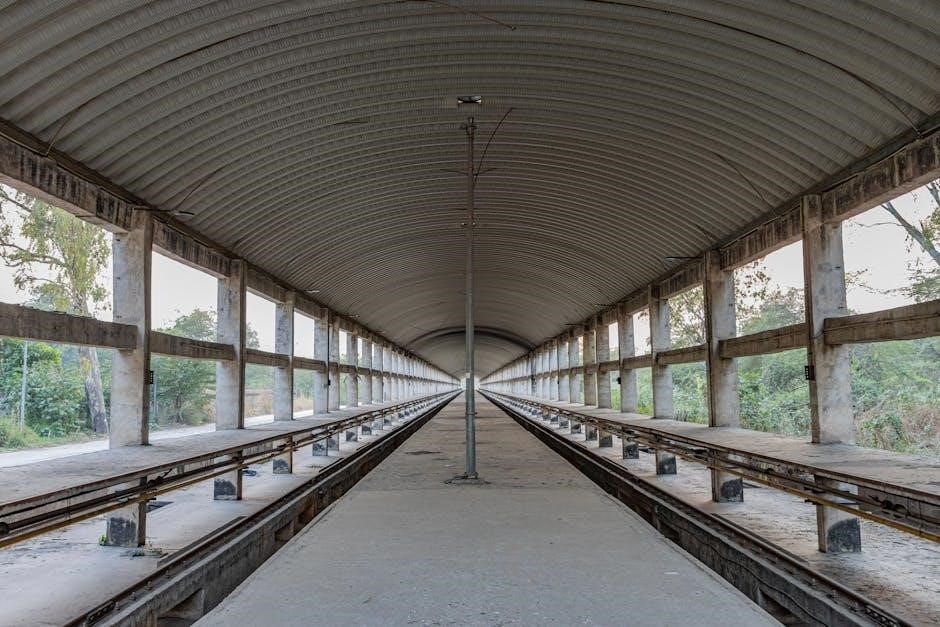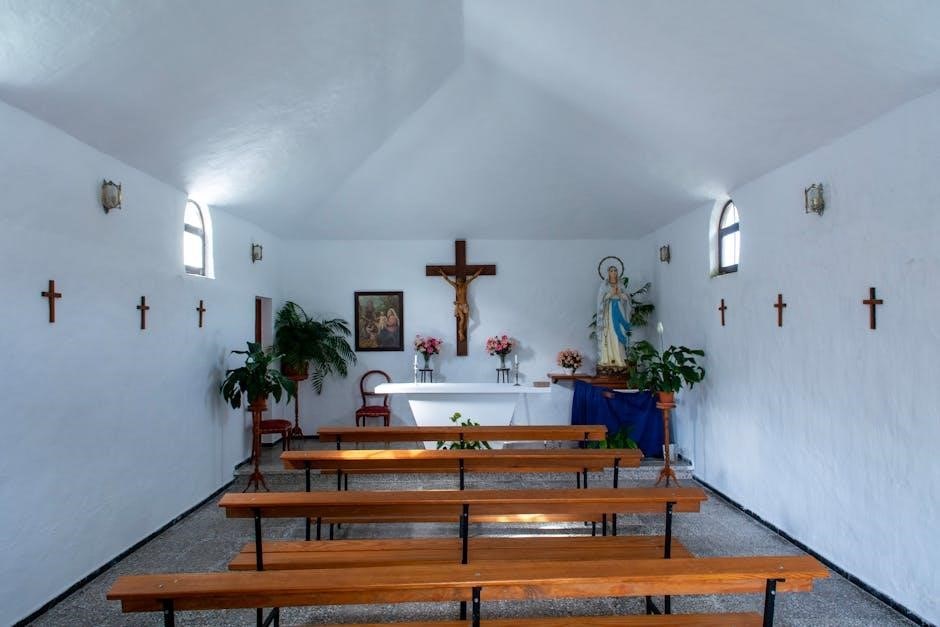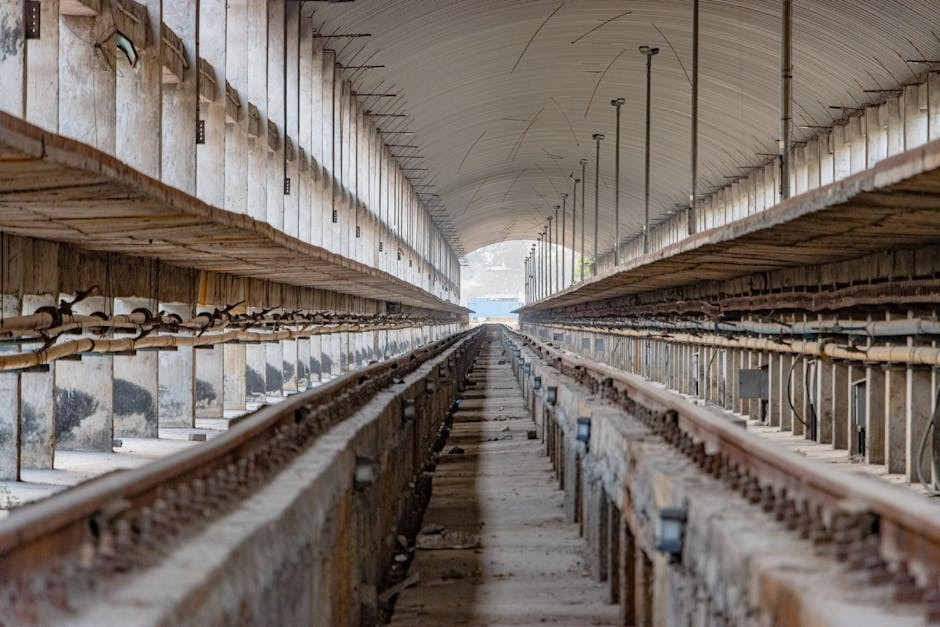14 stations of the cross pictures pdf
The 14 Stations of the Cross represent a visual pilgrimage, tracing Christ’s journey from condemnation to burial. Originating in Jerusalem, they offer a sacred reflection on His sacrifice, used during Lent and beyond for personal or communal devotion, fostering spiritual connection and gratitude.
Overview of the Stations of the Cross
The Stations of the Cross are a series of 14 events depicting Jesus Christ’s journey from condemnation to burial. These stations, rooted in Christian tradition, provide a visual and spiritual pathway for believers to reflect on His sacrifice. Originating in Jerusalem, they were later formalized by the Catholic Church and are now commonly found in churches worldwide. Each station represents a specific moment in Christ’s Passion, offering a focal point for prayer and meditation. During Lent, particularly on Good Friday, the Stations are often prayed collectively or individually. They serve as a powerful tool for spiritual growth, encouraging followers to connect deeply with the narrative of Christ’s love and redemption. The use of images, such as those in a PDF guide, enhances this devotion, making the journey accessible and meaningful for all.
Significance of the 14 Stations in Christian Devotion
The 14 Stations of the Cross hold profound significance in Christian devotion, offering a poignant reflection on Christ’s sacrificial love. They provide a spiritual pathway for believers to contemplate His Passion, fostering empathy and gratitude. Rooted in centuries of tradition, the Stations serve as a vivid reminder of the events leading to Christ’s crucifixion and burial. They are particularly cherished during Lent and Holy Week, inviting followers to deepen their faith through prayer and meditation. The Stations also symbolize a spiritual pilgrimage, allowing devotees to walk in Christ’s footsteps metaphorically. Visual representations, such as those in a PDF guide, enhance this experience, making the Stations accessible for personal or communal reflection. By engaging with the Stations, Christians connect with the heart of their faith, finding inspiration in Christ’s enduring love and redemption.

Historical Background of the Stations of the Cross
The Stations of the Cross trace their origins to early Christian pilgrimages in Jerusalem, where believers retraced Christ’s Passion. Over centuries, this practice evolved into a devotional tradition, with the number of stations eventually standardized to 14. The Stations gained prominence in Catholic devotion, becoming a popular form of worship, especially during Lent. Their visual depictions, such as in PDF guides, have made the Stations accessible for reflection worldwide, helping Christians connect with Christ’s journey through prayer and meditation. This historical evolution underscores the enduring significance of the Stations in Christian spirituality, bridging the past with contemporary practices.

The 14 Stations of the Cross: A Detailed Explanation
The 14 Stations of the Cross depict key events from Jesus’ condemnation to His burial, offering a profound reflection on His sacrifice and divine love for humanity.
Station 1: Jesus is Condemned to Death
Station 1 depicts Pontius Pilate condemning Jesus to death, a pivotal moment in the Passion narrative. Despite finding no guilt in Jesus, Pilate yields to the demands of the crowd, influenced by religious and political pressures. This station highlights the injustice of the legal process and the tragic surrender to human fear and prejudice. The image often shows Pilate washing his hands, symbolizing his attempt to absolve himself of responsibility. For believers, this station invites reflection on the cost of sin and the divine sacrifice that followed. It serves as a powerful reminder of Christ’s obedience to His Father’s will, even in the face of unjust suffering, setting the stage for His journey to Calvary.
Station 2: Jesus Takes Up His Cross
Station 2 captures the moment Jesus accepts the cross, symbolizing His willingness to embrace suffering for humanity’s salvation. This act embodies obedience, humility, and divine love. The heavy cross represents the weight of sin and the burden Christ carries for all people. In images, Jesus is often depicted bending to take up the cross, illustrating His acceptance of the Father’s will. This station invites believers to reflect on their own willingness to carry life’s challenges with faith and trust in God. It also serves as a reminder of Christ’s teachings about discipleship, where followers are called to “take up their cross” in imitation of Him. The scene sets the stage for the physical and spiritual journey ahead, emphasizing the profound sacrifice that defines God’s love for humanity.
Station 3: Jesus Falls for the First Time
Station 3 depicts Jesus falling under the weight of the cross, symbolizing His humanity and vulnerability. This moment highlights His physical and emotional struggle, as well as His willingness to endure suffering for the sake of redemption. The fall represents the burden of sin and the frailty of human nature, inviting believers to reflect on their own struggles and weaknesses. In images, Jesus is often shown kneeling or collapsed, emphasizing His sacrifice and obedience. This station serves as a reminder of Christ’s identification with human suffering and His unwavering commitment to His mission. It also invites prayer for strength to carry one’s own crosses and to trust in God’s grace during trials. The first fall sets the tone for the physical and spiritual journey ahead, underscoring the depth of Christ’s love and sacrifice.
Station 4: Jesus Meets His Mother
Station 4 captures the poignant encounter between Jesus and His mother, Mary, along the path to Calvary. This meeting is a profound moment of maternal love and sorrow, as Mary witnesses her Son’s suffering. The emotional depth of this station invites reflection on the bond between parent and child, as well as the shared burden of pain and sacrifice. In images, Mary is often depicted with a gesture of support or distress, while Jesus pours out love and reassurance. This station emphasizes the human dimensions of Christ’s journey and the universal experience of a mother’s compassion. It serves as a reminder of the strength found in familial love and the grace of divine providence. The meeting also symbolizes Mary’s role as a model of faith and steadfastness in the face of immense trial. This station deepens devotion by highlighting the interplay of human emotion and divine purpose.
Station 5: Simon of Cyrene Helps Jesus Carry the Cross
Station 5 illustrates the moment when Simon of Cyrene is compelled by Roman soldiers to assist Jesus in carrying the cross. Exhausted and weakened, Jesus accepts this help, which provides temporary relief. This act of solidarity highlights the importance of human kindness and support in times of suffering. In Christian devotion, Simon’s role is seen as a call to share the burdens of others, mirroring Christ’s selfless love. The image often depicts Simon’s reluctance turning into compassion, symbolizing the transformative power of faith. This station invites reflection on how we, like Simon, can assist others in their struggles. It also emphasizes the universal need for help and the grace of unexpected support. Through this moment, believers are reminded of the value of humility and the shared journey of carrying life’s crosses. The scene underscores the interconnectedness of human experiences and divine mercy.
Station 6: Veronica Wipes the Face of Jesus
Station 6 captures the compassionate act of Veronica, who bravely steps forward to wipe the face of Jesus as He carries the cross. Her gesture of mercy and devotion is a profound moment in the Passion narrative. According to tradition, an image of Jesus’ face miraculously appeared on the cloth she used, known as the Veil of Veronica. This station reflects the human desire to comfort those in suffering and the deep connection between believers and Christ. Veronica’s actions symbolize the transformative power of love and the enduring presence of divine grace. The image often depicted in Stations of the Cross pictures emphasizes the tenderness of this encounter, reminding followers of the importance of compassion and faith in the face of adversity. This moment invites reflection on how small acts of kindness can bear witness to God’s love.
Station 7: Jesus Falls for the Second Time
Station 7 depicts Jesus falling for the second time under the weight of the cross, a moment of immense physical and spiritual exhaustion. Despite the assistance of Simon of Cyrene, the burden of the cross and the cruelty of the crowd overwhelm Him. This fall symbolizes the frailty of the human condition and the inevitability of suffering in life. It invites believers to reflect on their own struggles and the need for perseverance in faith. The image often shows Jesus’ determination to continue His journey, embodying resilience and devotion. This station encourages prayer for strength in times of trial and gratitude for Christ’s unwavering commitment to redemption. The visual representation in Stations of the Cross pictures underscores the raw emotion of this moment, urging followers to unite their sufferings with His.


Station 8: Jesus Speaks to the Women of Jerusalem
Station 8 captures the poignant moment when Jesus, amidst His suffering, turns to the women of Jerusalem who are mourning for Him. He says, “Do not weep for me, but weep for yourselves and for your children” (Luke 23:27-31). This station highlights Christ’s compassion and foresight, as He warns of the sorrows that will befall Jerusalem. The image often portrays Jesus looking at the women with deep empathy, while they express sorrow and concern. This moment invites reflection on the importance of mourning with hope and trusting in God’s plan. The visual depiction in Stations of the Cross pictures emphasizes the emotional connection between Jesus and the women, urging viewers to consider the broader message of repentance and salvation. It serves as a reminder of the universal call to empathy and spiritual preparedness.
Station 9: Jesus Falls for the Third Time
Station 9 depicts Jesus falling for the third time under the weight of the cross, a moment of profound physical and spiritual exhaustion. This fall symbolizes human frailty and the overwhelming burden of sin. As Jesus struggles to rise, His resolve to complete His mission for humanity remains unwavering. The image often shows Jesus glancing upward, as if seeking strength from His Father, while bystanders watch in a mix of pity and indifference. This station invites reflection on perseverance through adversity and the importance of trusting in divine providence. The visual representation in Stations of the Cross pictures emphasizes the raw emotion of the moment, encouraging viewers to contemplate their own struggles and the need for resilience in faith. It serves as a powerful reminder of Christ’s unconditional love and sacrifice.
Station 10: Jesus is Stripped of His Garments
Station 10 illustrates the moment when Jesus is stripped of His garments by the Roman soldiers, a scene depicted in the Gospels of Matthew, Mark, Luke, and John. This act of humiliation and degradation signifies the stripping away of Jesus’ dignity and identity, leaving Him vulnerable and exposed. The soldiers’ indifference contrasts with the profound spiritual significance of the moment, as Jesus’ willingness to endure such shame underscores His complete surrender to God’s will. The visual imagery in Stations of the Cross pictures often captures the starkness of this event, inviting reflection on the true nature of human sin and the depth of Christ’s sacrifice. This station encourages believers to meditate on the humility and vulnerability required to embrace a life of selfless love and service.
Station 11: Jesus is Nailed to the Cross
Station 11 captures the harrowing moment when Jesus is nailed to the cross, a scene of intense physical suffering and profound spiritual significance. The Roman soldiers, driven by duty, execute the crucifixion with brutal efficiency, driving nails into Jesus’ hands and feet. This act of crucifixion, described in the Gospels, symbolizes the ultimate sacrifice for humanity’s sins. The imagery in Stations of the Cross pictures often portrays the harsh reality of this moment, emphasizing the brutality and vulnerability of Christ. Yet, amidst the pain, the scene also conveys the depth of Jesus’ obedience to His Father’s will and His love for mankind. This station invites reflection on the cost of redemption and the transformative power of selfless sacrifice, urging believers to contemplate the profound implications of Christ’s willingness to endure such suffering for the salvation of all.

Station 12: Jesus Dies on the Cross
Station 12 depicts the culmination of Christ’s Passion, as He breathes His last on the cross. The scene captures the profound moment of His death, surrounded by His Mother, John, and the faithful women. The crucifixion, described in the Gospels, emphasizes the physical and emotional toll of the ordeal. Jesus’ final words, “It is finished,” signify the completion of His mission to redeem humanity. The imagery in Stations of the Cross pictures often portrays the dramatic events accompanying His death, such as the darkening of the sky, the earthquake, and the tearing of the temple veil. This station invites believers to reflect on the ultimate sacrifice of love and the triumph of divine mercy over sin and death. It calls for gratitude, sorrow, and a deep appreciation for the redemption won through Christ’s selfless giving of His life. This moment is central to Christian faith, representing both sorrow and hope.
Station 13: Jesus is Taken Down from the Cross
Station 13 captures the poignant moment of Jesus being removed from the cross, emphasizing the profound grief and reverence of those who loved Him. Depicted in art and devotion, this station often shows Joseph of Arimathea and Nicodemus carefully lowering His lifeless body, while His Mother and the faithful women mourn beside Him. The scene reflects the deep sorrow of losing a loved one, yet it also carries a sense of sacred duty and compassion. The act of taking Jesus down from the cross symbolizes the transition from His crucifixion to His burial, preparing for the ultimate triumph of His resurrection. This station invites believers to contemplate the humanity of Christ and the depth of His sacrifice, as well as the love and devotion of those who remained loyal to Him in His final moments. It is a moment of tender care amidst overwhelming sorrow, bridging grief and hope.
Station 14: Jesus is Placed in the Tomb
Station 14 marks the final event of the Passion, where Jesus is laid to rest in a tomb donated by Joseph of Arimathea. This profound moment of surrender and transition is often depicted in art as a somber yet hopeful scene. The lifeless body of Christ is gently placed in the tomb, surrounded by His grieving followers, including the Virgin Mary and the faithful women. The act of burial signifies the completion of His earthly journey and the anticipation of resurrection. The tomb, sealed with a stone, becomes a symbol of both death and the promise of new life. This station invites reflection on the depths of Christ’s sacrifice and the trust in God’s plan, even in the face of darkness. It is a moment of stillness, preparing the heart for the triumph of Easter.

Using 14 Stations of the Cross Pictures for Reflection
Stations of the Cross pictures serve as powerful visual aids for meditation, helping believers reflect on Christ’s Passion. They provide a meaningful way to engage with His journey, fostering prayer and contemplation.
How to Meditate on the Stations of the Cross
Meditating on the Stations of the Cross involves reflecting on each event of Christ’s Passion, using images as visual aids. Begin by prayerfully contemplating the first station, focusing on the emotions and significance of Jesus being condemned to death. Pause to reflect on how His sacrifice relates to your life. Move through each station slowly, allowing the images to deepen your connection to His journey. Consider the physical and emotional suffering He endured, and pray for strength to carry your own crosses. Take a moment of silence at each station to absorb the spiritual lessons. This practice fosters gratitude, compassion, and a deeper understanding of Christ’s love. Use the pictures to guide your thoughts and prayers, making the meditation a personal and transformative experience.
Prayerful Reflections Accompanying Each Station
Prayerful reflections at each station deepen the spiritual connection to Christ’s journey. Begin by expressing gratitude for His sacrifice, acknowledging the love behind His suffering. At each image, pause to reflect on how the event applies to your life. For instance, at the first station, pray for courage to face injustices, while at the third, ask for strength in times of personal struggle. Use the visuals to guide your prayers, seeking forgiveness and renewal. Offer intentions for others, especially those enduring similar trials. Conclude each station with a heartfelt prayer, such as the Stations of the Cross prayer by Saint Alphonsus Liguori, to enhance your devotion. This practice fosters a profound sense of unity with Christ and strengthens your faith, making the journey a meaningful spiritual pilgrimage.
Creating a 14 Stations of the Cross Pictures PDF
Design a visual guide with high-quality images, prayers, and scriptures for each station. Use design tools to ensure clarity and spiritual focus, creating a meaningful resource for reflection and devotion.
Steps to Design a Visual Guide
Select high-quality images that vividly depict each of the 14 Stations of the Cross, ensuring they are visually striking and relevant to the narrative.
Format the layout using design software, arranging images alongside corresponding prayers, scriptures, and reflections.
Add headings and captions for each station, including biblical references and brief descriptions.
Incorporate prayers and meditations to guide users in their spiritual reflection.
Proofread and adjust formatting to ensure clarity and readability.
Save and share the PDF for personal or communal use, making it accessible for devotional practices.
Adding Prayers and Scriptures to the PDF
Select relevant prayers and Bible verses that align with each station, providing spiritual depth and reflection.
Pair each station’s image with corresponding text, ensuring prayers and scriptures complement the visual narrative.
Incorporate traditional prayers, such as the Stations of the Cross by Saint Alphonsus Liguori, for authenticity.
Format text clearly, using readable fonts and proper spacing to enhance meditation.
Add a brief reflection or meditation for each station to guide users in their devotional practice.
Include instructions on how to pray and reflect, making the guide accessible for both individuals and groups.
This integration of prayers and scriptures enriches the visual guide, fostering a deeper spiritual connection during Lent and beyond.
The Stations of the Cross are a profound spiritual tool, guiding believers through Christ’s Passion. Using a PDF with images, prayers, and scriptures enhances reflection, making it accessible for personal or communal devotion during Lent and beyond.
The Importance of Visual Aids in Spiritual Practices
Visual aids, such as the 14 Stations of the Cross pictures, play a crucial role in deepening spiritual reflection. These images provide a tangible connection to Christ’s Passion, making the story more relatable and accessible. By visualizing each station, believers can immerse themselves in the emotions and significance of Jesus’ journey, fostering a deeper sense of empathy and devotion; The use of a PDF guide enhances this experience, allowing individuals to carry the Stations with them for personal or communal prayer. Visual representations bridge the gap between the biblical narrative and modern spirituality, making the sacred accessible to all. They serve as powerful reminders of Christ’s love and sacrifice, enriching both private and communal worship experiences throughout Lent and beyond.